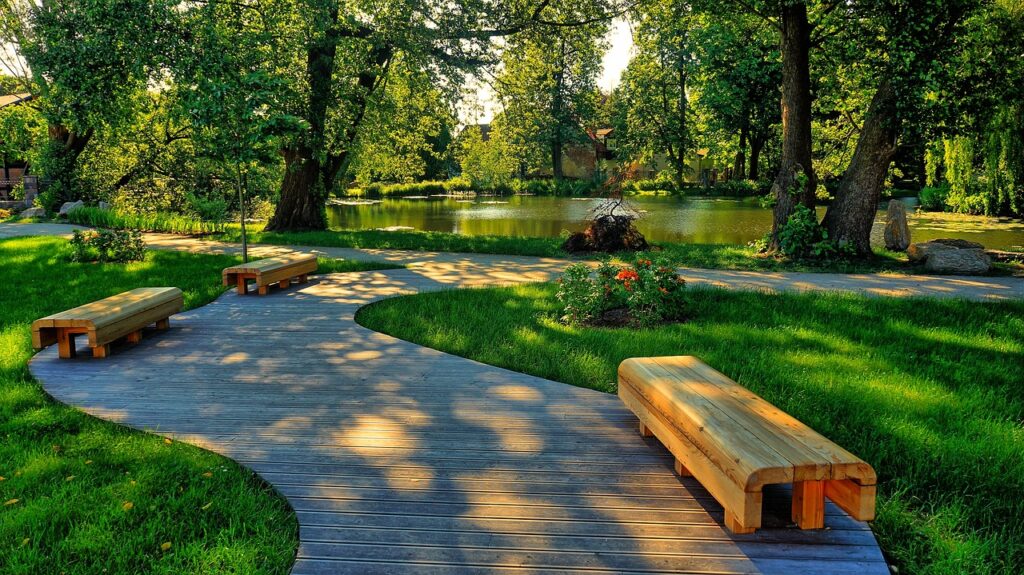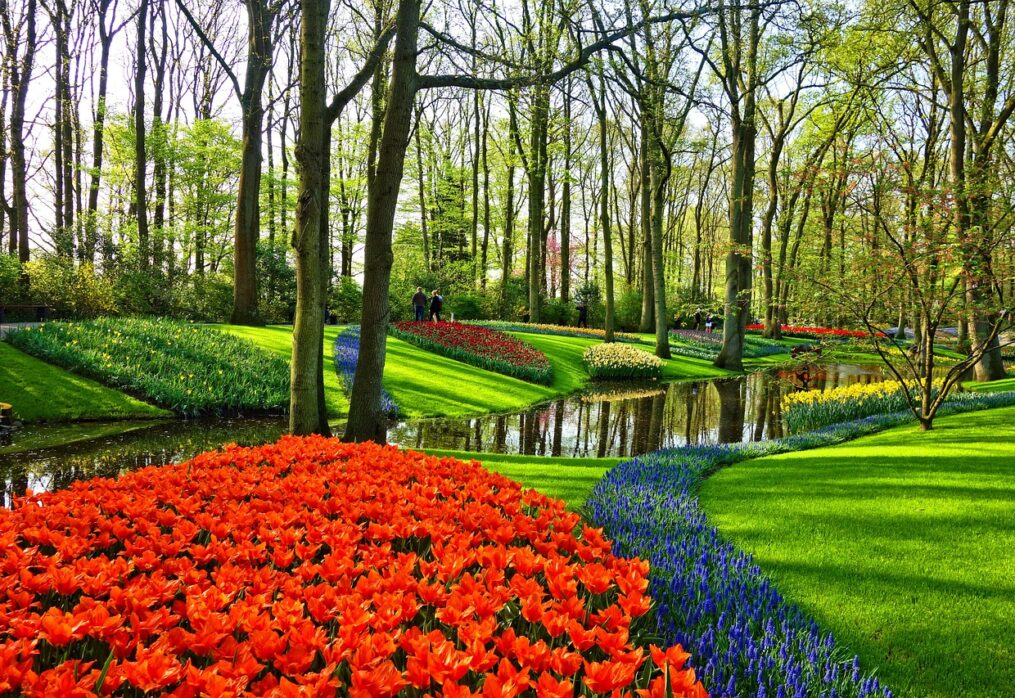How to Create a Pollinator-Friendly Lawn with Natural Grass
As awareness about the importance of pollinators like bees, butterflies, and other beneficial insects grows, homeowners are beginning to make changes to their lawns that support these crucial species. A pollinator-friendly lawn not only benefits the environment but also creates a beautiful, sustainable outdoor space. If you want to help protect pollinators while enjoying the beauty of a natural lawn, creating a pollinator-friendly lawn with natural grass is an excellent approach. In this guide, we’ll explore how you can design your lawn to support pollinators by choosing the right natural grasses, incorporating native plants, and making other environmentally conscious decisions. By the end of this article, you’ll have a clear understanding of how to make your lawn a thriving habitat for pollinators.
What is a Pollinator-Friendly Lawn?
A pollinator-friendly lawn is a space designed with the intention of supporting pollinators, including bees, butterflies, moths, and other insects that help fertilize plants by transferring pollen. These insects play a crucial role in maintaining biodiversity and ensuring that many of the foods we consume are available. Pollinator-friendly lawns are typically designed to feature plants, grasses, and flowers that attract and support pollinators, offering them food and shelter. Creating a pollinator-friendly lawn with natural grass means opting for grass species that are native to your region, require less maintenance, and provide a suitable environment for insects to thrive. This contrasts with traditional lawns, which often rely on chemically treated grass and may lack the diversity of plant species that pollinators need.
Why Choose Natural Grass for Pollinator-Friendly Lawns?
Natural grass offers a sustainable, eco-friendly alternative to conventional lawns, which are often dominated by non-native grasses and require significant amounts of water, fertilizer, and pesticide use. Natural grass varieties, on the other hand, are adapted to your local climate and typically require less water and maintenance. They are also better suited to creating a habitat for local wildlife, including pollinators. Native grass species play a vital role in supporting local ecosystems by providing food sources for pollinators and creating nesting areas. By choosing the right natural grasses for your lawn, you can help support biodiversity and contribute to the health of local ecosystems.
Step 1: Choose Pollinator-Friendly Grass Varieties
When creating a pollinator-friendly lawn, one of the first steps is selecting the right type of grass. Natural grasses are typically the best option, as they are adapted to your region’s climate and require less maintenance. Below are some pollinator-friendly grass varieties that are great for attracting beneficial insects.
# 1. Buffalo Grass (Buchloe dactyloides) Buffalo grass is a low-maintenance, drought-tolerant grass that is native to the Great Plains. It grows well in full sun and is an excellent choice for a pollinator-friendly lawn, as its shallow root system supports a variety of beneficial insects, including pollinators.
# 2. Blue Grama (Bouteloua gracilis) Blue grama is a native grass found throughout North America, particularly in the western United States. It has a unique appearance, with its signature “eyelash” seed heads, and provides an excellent habitat for pollinators. It thrives in dry, well-drained soil and is perfect for xeriscaping.
# 3. Fescue (Festuca spp.) Fescue grasses, such as creeping red fescue and hard fescue, are native to many parts of North America. These cool-season grasses are great for areas with moderate climates and are well-suited to the shade. They also provide a habitat for insects and wildlife, making them ideal for a pollinator-friendly lawn.
# 4. Ryegrass (Lolium spp.) Perennial ryegrass is another great option for a pollinator-friendly lawn. It establishes quickly and provides an abundant food source for pollinators. Though it is not a native grass in every region, it does support beneficial insects when used in the right context.
# 5. Paspalum (Paspalum spp.) Native to the southeastern United States, paspalum is a warm-season grass that tolerates both drought and poor soil conditions. It is well-suited for a pollinator-friendly lawn in warmer climates, where it can support native bees and other pollinators.
Step 2: Incorporate Native Plants and Flowers
While natural grasses form the foundation of a pollinator-friendly lawn, adding native flowering plants will provide valuable nectar and pollen for pollinators. Native wildflowers and plants are essential for attracting bees, butterflies, and other beneficial insects to your lawn. Consider including these pollinator-friendly plants in your yard:

# 1. Milkweed (Asclepias spp.) Milkweed is crucial for attracting monarch butterflies. Monarchs lay their eggs on milkweed, and the larvae feed on the plant’s leaves. Additionally, milkweed flowers provide nectar for a variety of pollinators. There are many species of milkweed, so choose one that is native to your area.
# 2. Coneflower (Echinacea spp.) Coneflowers are another popular choice for pollinator-friendly gardens. The nectar-rich flowers attract bees, butterflies, and even hummingbirds. They are drought-tolerant and thrive in full sun, making them an ideal addition to a natural grass lawn.
# 3. Black-eyed Susan (Rudbeckia hirta) This native wildflower is well-known for its striking yellow petals and dark centers. Black-eyed Susans attract a wide variety of pollinators, including bees and butterflies, and can tolerate both sun and partial shade.
# 4. Bee Balm (Monarda spp.) Bee balm is a perennial herb that attracts bees, butterflies, and hummingbirds. Its aromatic flowers add a burst of color to your lawn and thrive in full sun to partial shade.
Step 3: Reduce Lawn Mowing and Leave Some Areas Wild
Traditional lawns often require frequent mowing, which can disrupt pollinator habitats. To create a more pollinator-friendly environment, consider mowing less frequently. Longer grass allows pollinators to nest in the soil and provides them with cover. Additionally, leaving some areas of your lawn undisturbed and allowing them to grow naturally will help support pollinators and other wildlife. If you have a larger lawn, consider designating specific areas as wildflower meadows or natural grass patches. These areas can be left to grow naturally, offering a haven for pollinators to thrive.
Step 4: Minimize Pesticide Use
Pesticides can be harmful to pollinators, so it’s important to minimize their use on your lawn. If you must treat your lawn for pests, opt for organic or natural solutions that won’t harm pollinators. Neem oil and insecticidal soap are two non-toxic options that are safer for beneficial insects.
Step 5: Provide Water Sources and Shelter
Pollinators need access to water for hydration, especially in hot weather. Consider adding a shallow water feature, such as a birdbath or small pond, to your lawn. Ensure that the water is shallow enough for insects to drink from safely. Additionally, creating sheltered areas in your yard can provide nesting sites for pollinators. For example, leaving dead plant stems and grass clippings can offer a home for solitary bees and other insects.
Step 6: Be Patient and Enjoy the Benefits
Creating a pollinator-friendly lawn with natural grass is a long-term project that requires patience. Over time, as your lawn matures, you’ll see an increase in the number of pollinators visiting your yard. These beneficial insects will not only help maintain a healthy ecosystem but will also contribute to the beauty and biodiversity of your landscape.
Final Thoughts
A pollinator-friendly lawn with natural grass is a great way to support local ecosystems, attract beneficial insects, and create a beautiful, sustainable outdoor space. By choosing native grass varieties, incorporating native plants and flowers, reducing lawn maintenance, and minimizing pesticide use, you can make a positive impact on the environment while enjoying a low-maintenance, eco-friendly lawn. Whether you’re a homeowner looking to attract more pollinators or an environmentalist seeking to contribute to the preservation of local wildlife, creating a pollinator-friendly lawn with natural grass is a step in the right direction. So, get started today and watch your lawn flourish with the vibrant colors and buzzing life of pollinators.
Contact Us Today!
Ready to transform your lawn? Contact Balaji Nursery today at www.balajinursery.org or call us for a consultation at 9354173113 / 8766234417 Let us help you create the lawn of your dreams!
Last Updated on 1 year ago by Anjali Mehra Ph.D. in Horticulture (Punjab Agricultural University)
- Why Lawn Grass Fails After Installation (Real Indian Case Studies) - December 25, 2025
- Nilgiri Grass vs Korean Grass – Price, Look & Maintenance Compared - December 23, 2025
- Delhi Pollution & Dust-Proof Lawn Care Guide - December 20, 2025
